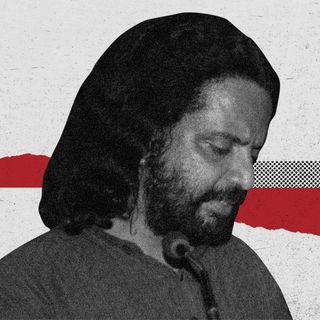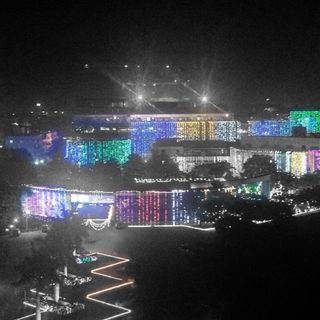
Pyaar Aur Parivartan — Two Interfaith Love Stories From Bundelkhand
Khabar Lahariya reports on how interfaith love is thriving in times of increasing intolerance.

‘Love Jihad’ has become the lens through which the Indian state, and increasingly, Indian society, now view interfaith love. What should be a celebration of India’s religious diversity is now often shrouded in the suspicion surrounding religious conversion. The states of Uttar Pradesh and Madhya Pradesh, especially, with new anti-religious conversion ordinances — passed under the guise of ‘protecting’ women from coercion — endanger interfaith couples’ freedom, dignity and lives. In this highly politicized discussion, we often hold the interfaith and love aspects of such relationships as if in tension, antithetical to each other. This narrative ignores some of the basic tenets of long-term companionship — adjustment and welcome change.
On Valentine’s Day this year, Khabar Lahariya’s Meera and Nazni instead spoke to interfaith couples in the states of U.P. and M.P. to draw focus back to the love, to the relationship, of interfaith couples, in an attempt to remember how they have always happily accommodated their religious differences, regardless of whether they decided to convert to each other’s faith or not.
“When we fell in love we didn’t think about our religion. And I don’t think I changed anything especially for him,” Soorajkali, a Hindu woman in her mid-40s, and married to a Muslim man in Chitrakoot, says. “I accept him for who he is and he accepts me for who I am.” They have built their relationship on mutual understanding and respect — Soorajkali says she has embraced her husband’s religion in some ways, such as reading the Qur’an, while she also continues to read the Gita and the Ramayana. And of her own accord, she says she has rejected aspects of her own religion, such as wearing the sindoor — she says she never liked wearing it. Having been together for two decades, the couple has found their own unique partnership within their respective religions, embracing aspects of the other they love while staying true to their own individual personalities. The only grouse she has, Soorajkali says, is that “He keeps asking me to put on makeup if we go out at night. But why should I? If I want to do it, I will do it whenever I want. I tell him I am not going to do anything just because you want me to.” Asserting her own individuality within the relationship — a concept lawmakers are vehement women can’t exercise in interfaith relationships — Soorajkali adds, “I am my own person and want to stay true to myself.”
Related on The Swaddle:
UP Police Investigation of ‘Love Jihad’ Concludes What We Already Know — That it Doesn’t Exist
The political conversation around interfaith couples ironically often doesn’t include the couples themselves. The dominant political narrative in states that seek to deter interfaith relationships — especially those that discount women’s own agency in such relationships — comes off as tone-deaf, as inherently lacking in an understanding of how such relationships can thrive. “We both are intelligent enough to realize that we are free to follow our religion our way. We have adjusted to accommodate each other’s needs,” Zoya* says, adding her partner will often send her iftaar online if he is far away or cook it for her at home. “I will make sure that I cook his vrat food without any non-vegetarian food around,” Zoya adds. Having been in a committed relationship in Banda for the last eight years, she says they’ve reached a mutual understanding that they don’t need to interfere with one another’s religious beliefs. Zoya says building a relationship that is built on acceptance of each other’s religious beliefs allows them to focus on each other as people, to make changes for each other for the good of the relationship, and to “make sure that we have the other’s best interest at heart.” The golden rule that they follow, Zoya says, is to ask of the other only what they themselves would be comfortable doing. “I will never measure my love and relationship against religion. They are separate and equal.”
For Zoya and her partner, the relationship they have built is what helps them cope with the stress of the current political environment and how relationships such as theirs are being put under the microscope by law enforcement. “If we come across some news or posts on social media that has all these incendiary articles, we immediately distance ourselves from it. We change the channel or scroll faster,” Zoya says. “We will not engage with this, we will not read all this and we will never let ourselves or anybody else view our relationship from this lens.”
Soorajkali’s and Zoya’s experiences in their relationships — of having agency, of willingly embracing their partners’ faith in small and big ways — are also borne out by the data. In Uttar Pradesh, for example, within a month of the law being passed, 14 cases had been booked under the ordinance that attacks interfaith love. In 12 of the 14 cases, relatives of the couples had filed a complaint, not the women in those relationships. The data shows how a majority of these cases arise out of an outside, third-party taking issue with an interfaith partnership, possibly emboldened by the intolerance being normalized by the government in states such as M.P. and U.P. Arguably, it’s this external interference that risks women’s agency than the relationship it seeks to protect them from.
A deeper look into how inter-faith love evolves and thrives in relationships such as Soorajkali’s and Zoya’s shows us the many different ways in which we’re capable of understanding and accepting each other. Consent, respect, and mutual understanding have built strong foundations for these love stories — if only the government could practice what these couples have already mastered.
Written by Khabar Lahariya based on field reporting by Meera Devi and Nazni Rizvi.
*Some names have been changed on request.
Khabar Lahariya is India's only grassroots, feminist news and media platform, run by an all-women team of reporters, editors and media practitioners, reporting on media-dark geographies of the north Indian hinterland.
Related


Evidence in Bhima Koregaon Case Was Planted on Activists’ Computers, Report Finds
